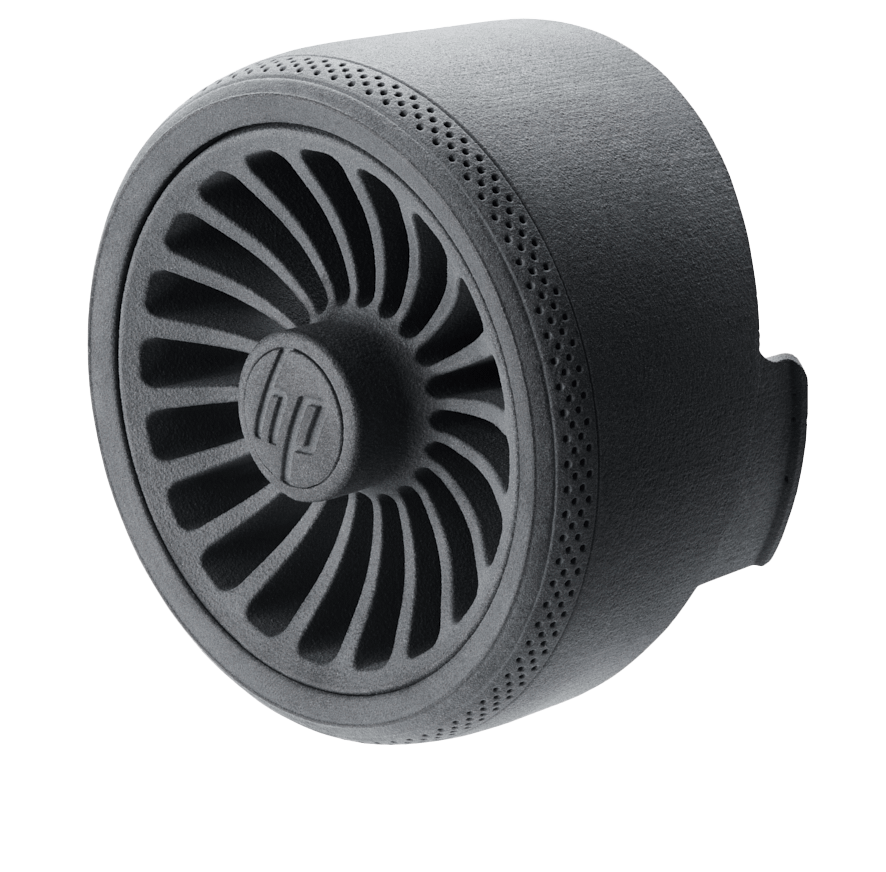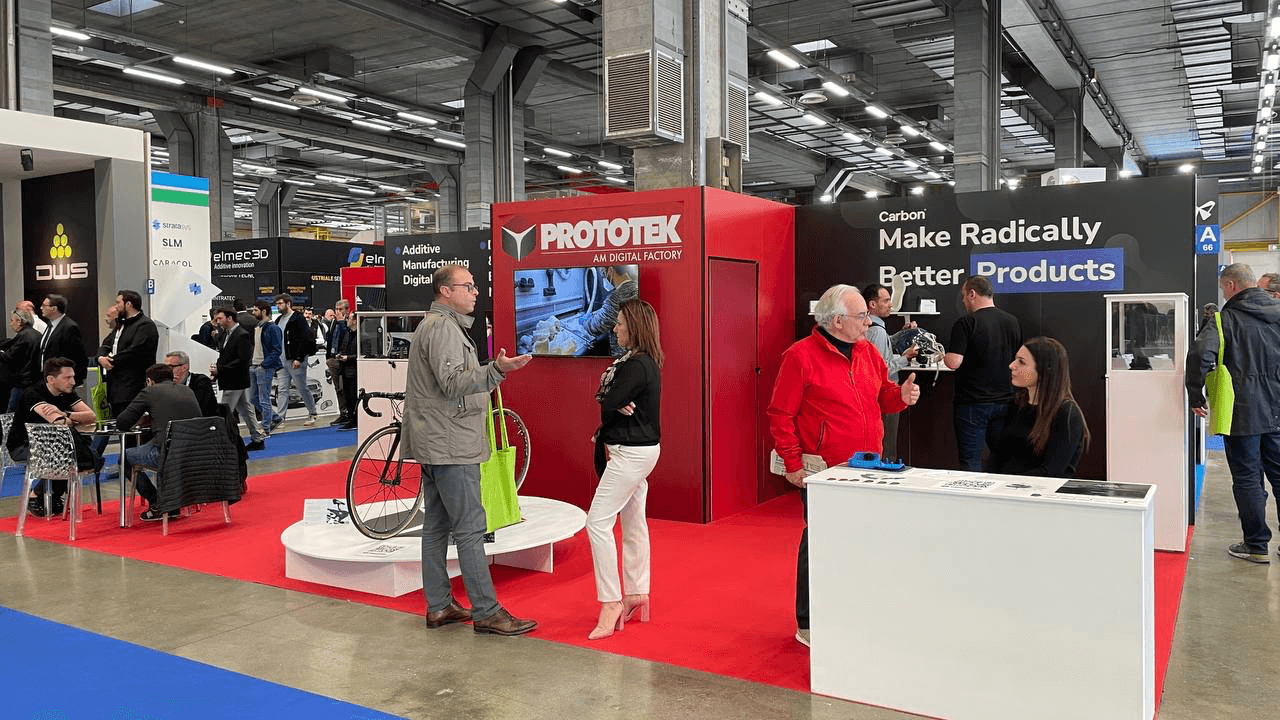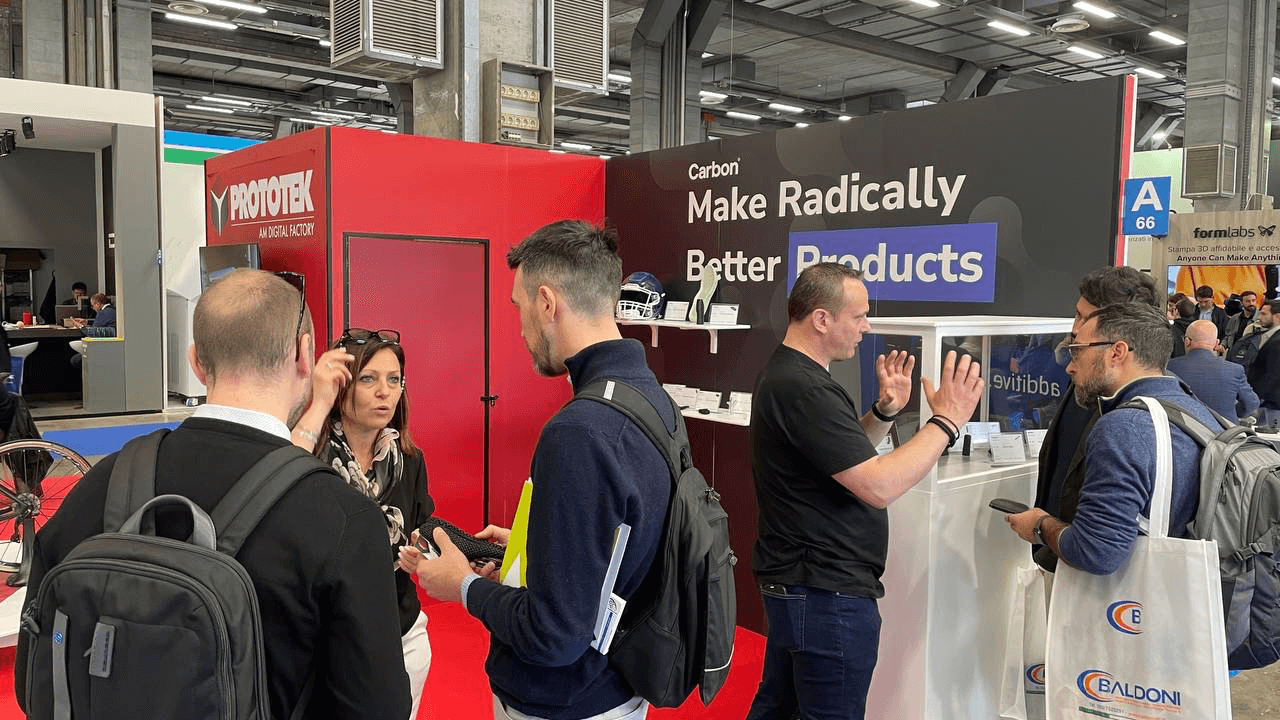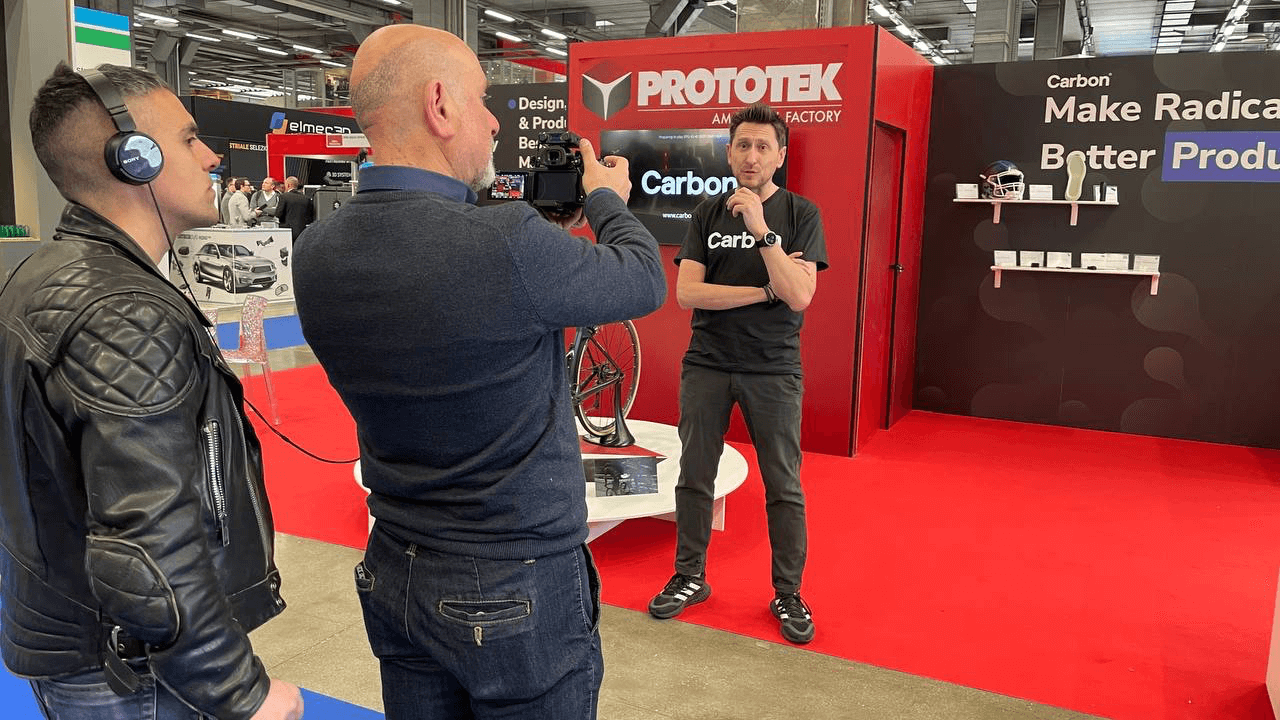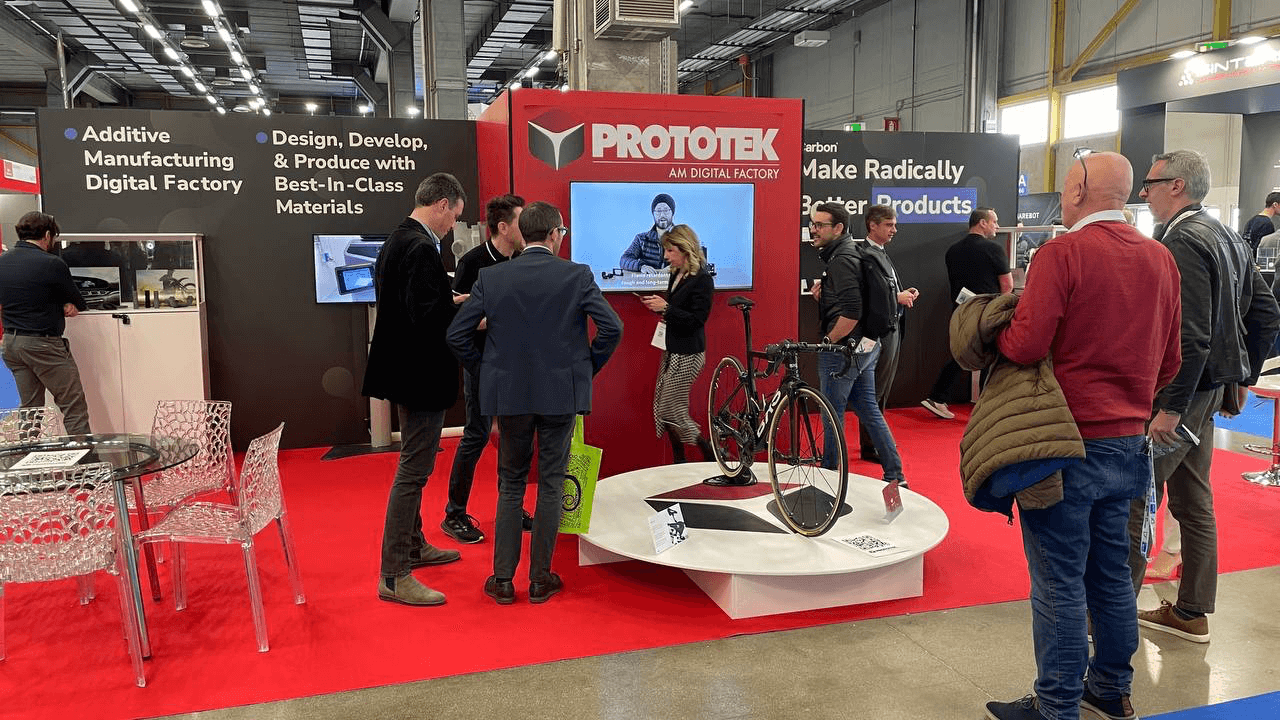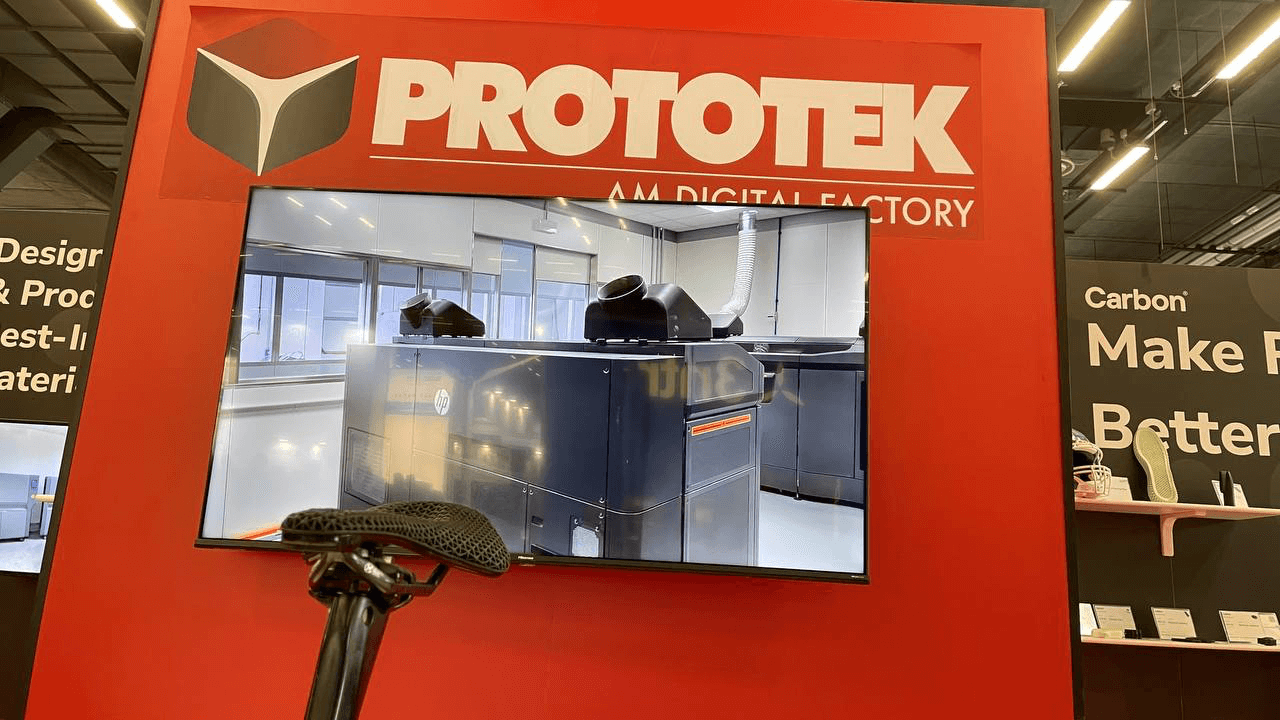3D Printing Technologies
𝗔𝗠 𝗗𝗜𝗚𝗜𝗧𝗔𝗟 𝗙𝗔𝗖𝗧𝗢𝗥𝗬
3D Printing Technologies: Carbon DLS and HP MJF
AM Digital Factory – Innovation in Additive Manufacturing
At Prototek, we embrace innovation through Carbon DLS™ and HP Multi Jet Fusion (MJF) — two of the most advanced 3D printing technologies available today.
Advanced 3D Printing Technologies for Industrial Production
In the constantly evolving world of digital manufacturing, 3D printing technologies have become essential tools for accelerating product development, optimizing costs, and ensuring exceptional production quality.
As a leading company in industrial additive manufacturing, Prototek stands out for its adoption of Carbon DLS™ (Digital Light Synthesis) and HP Multi Jet Fusion, two complementary solutions that redefine what is possible in rapid prototyping and industrial-grade additive production.
These systems allow us to manufacture strong, functional, and geometrically complex parts with remarkable accuracy and repeatability — providing a tangible competitive advantage across multiple industries including mechanical, electronic, and industrial design, as well as fashion, jewelry, and sports technology.
Thanks to the combination of high-performance materials and cutting-edge digital processes, Prototek delivers customized solutions in record time, transforming ideas into production-ready components.
Our goal is to deliver precision, speed, and quality in both rapid prototyping and additive manufacturing for industries such as mechanical engineering, electronics, sports equipment, coatings, jewelry, art, and industrial design.
These 3D printing technologies enable us to turn complex concepts into functional, high-performance parts — accelerating product development and improving manufacturing efficiency.
Carbon DLS™ – precision and flexibility with functional resins
Carbon DLS (Digital Light Synthesis) is a continuous photopolymerization process that uses digital light projection and oxygen-permeable optics to create high-resolution 3D printed parts with functional liquid resins.
Unlike traditional layer-by-layer 3D printing methods, Carbon DLS enables continuous printing, eliminating visible layers and producing mechanically superior, isotropic parts with excellent surface finish and durability.
This technology is ideal for applications requiring elastomeric or rigid materials, offering unmatched versatility for flexible lattices, energy-absorbing grids, wearables, connectors, and complex design elements.
One of the most widely used materials is EPU 46, a high-performance elastomeric polyurethane resin. It offers outstanding elasticity, impact resistance, and fatigue endurance, making it perfect for repeated-use parts and load-bearing components.
At Prototek, we use EPU 46 to produce custom shock-absorbing lattices and flexible components for sports equipment, footwear, and consumer products that demand long-lasting comfort and energy return.
HP Multi Jet Fusion – thermoplastics for high-performance parts
With HP Multi Jet Fusion (MJF), Prototek produces strong, detailed, and functional parts using advanced thermoplastic materials such as PA 12 (Nylon 12) or the polyurethan thermoplastic ESTATANE TPU M88A.
This material is renowned for its mechanical strength, chemical resistance, and dimensional stability, making it ideal for structural components, electronic housings, actuators, fixtures, and precision engineering parts.
HP MJF technology allows for the production of small series or unique components with tight tolerances and fine surface detail, maintaining consistent quality across every print.
Key Benefits of HP MJF Technology
Reduced lead times compared to traditional manufacturing.
Optimized costs for both prototypes and low-volume production.
Greater design freedom, enabling complex geometries and integrated features.
Consistent mechanical performance and excellent surface resolution.
Additionally, HP MJF allows functional features to be integrated directly into part design, minimizing post-assembly operations and simplifying production workflows.
At Prototek, we use HP MJF to produce durable thermoplastic components such as connectors, actuators, and structural casings, offering high precision, excellent quality, and reduced costs.
Complementary 3D printing technologies for maximum efficiency
Both Carbon DLS™ and HP MJF represent the forefront of industrial additive manufacturing, combining speed, precision, and design flexibility.
Carbon DLS™ excels with functional resins, including flexible and rigid polymers, perfect for high-performance, customizable components such as wearables and lattice structures.
HP MJF, on the other hand, delivers robust thermoplastic parts ideal for engineering applications, where mechanical reliability and dimensional accuracy are crucial.
Together, these 3D printing technologies enable Prototek to optimize production time, quality, and material efficiency, offering clients advanced functional testing capabilities and industrial-grade final parts.
Tailored applications across multiple industries
The 3D printing technologies adopted by Prototek are designed to deliver outstanding results in industries where precision, innovation, and reliability are essential. From mechanical and electronic engineering to sports equipment, fashion accessories, industrial design, and jewelry, Prototek offers solutions that adapt to each project’s specific technical and aesthetic requirements.
Main Benefits of Carbon DLS™ and HP MJF:
Exceptional dimensional accuracy and surface detail
Reduced production times for faster market delivery
Full customization of materials, colors, and geometries
Use of high-performance thermoplastics and functional resins
Superior mechanical strength, flexibility, and durability
With HP Multi Jet Fusion 3D printing, we produce complex parts in durable thermoplastics, like PA12, ideal for connectors, actuators, and structural components.
This ensures high precision, excellent quality, and optimized costs, with significantly reduced production times.
The Carbon Digital Light Synthesis (DLS) technology is ideal for 3D printing with functional, rigid, or elastomeric resins.
Among these, EPU 46 stands out, a flexible yet durable material perfect for functional and wearable components, offering exceptional elasticity, longevity, and wear resistance even under mechanical stress.
With HP Multi Jet Fusion, we produce robust prototypes such as durable and detailed electronic housings in PA12.
With Carbon DLS, we print flexible lattices in Elastomeric Polyurethane (EPU), ideal for custom shock absorbers.
Both technologies ensure precision, quality, and speed, optimizing production for advanced functional testing.
Why Choose Prototek
Choosing Prototek means partnering with a technical team specialized in industrial 3D printing and additive manufacturing.
We combine technological expertise, materials engineering, and industry experience to provide efficient, tailored solutions.
Every project is carefully analyzed by our experts to identify the most suitable technology and material, ensuring rapid delivery times and reliable, repeatable results.
Our mission is to support companies that aim to innovate, streamline production processes, and reduce time-to-market through the smart adoption of 3D printing technologies.
At Prototek, we bridge the gap between concept and production, opening new possibilities for creativity, performance, and competitiveness across industries.
Discover how Prototek’s Carbon DLS™ and HP MJF 3D printing technologies can accelerate your product development and enhance your production efficiency.
Request a consultation with Our Experts
